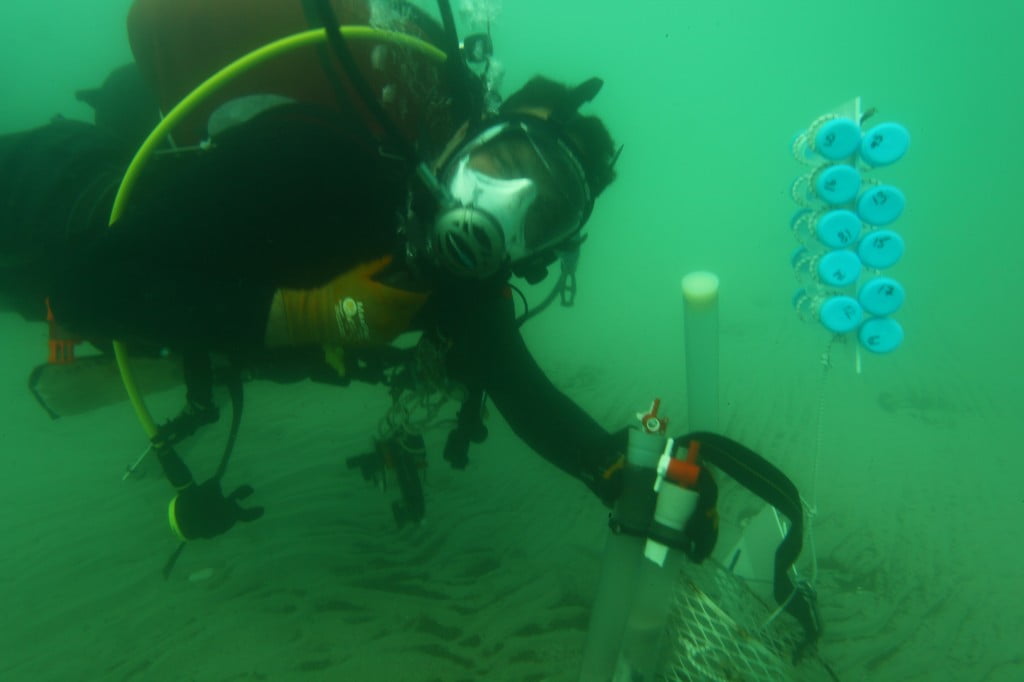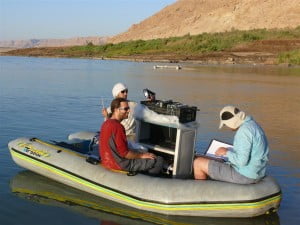Is it time to change the name of the Dead Sea? Researchers from the Ben-Gurion University in Israel announced that they have discovered deep springs on the floor of the Dead Sea, which provide fresh water. Meanwhile, a parallel study conducted by German researchers has found new forms of life growing around the fissures in the sea floor.
In the recent years, the Dead Sea has been shrinking increasingly as the water level drops at an alarming rate – about a meter a year. In order to understand the impact of this process on this unique ecosystem, Israeli and German scientists have been researching groundwater springs which discharge from the sea floor.
As part of the German-funded SUMAR project, Department of Geography and Environmental Development Prof. Jonathan Laronne and research student Yaniv Munwes developed the first system to directly measure spring discharge and to study the structure of the upward flow. Professional divers were sent down to the waters and based on submarine photography; the spring discharge and morphology were calculated.
The results of the study show that there are systems of complex springs hundreds of meters long and as deep as 30 meters. The springs appear from the sea floor through craters as large as 15 meters in diameter and 20 meters deep – with steep, finely laminated walls where there are alternating layers of sediment and minerals.
“By developing a measurement system for these springs, we will be able to determine more accurately how much water is really coming in to the Dead Sea,” commented Laronne. The Dead Sea has been gradually evaporating as its main source of fresh water, the Jordan River, has been siphoned off just below the Sea of Galilee for drinking water for Israelis, Palestinians and Jordanians.
It has been known for decades that the “Dead Sea” was a misnomer, but even the researchers now admit that the rich variety of life found in this study was unexpected. “While fish are not present, carpets of micro-organisms that cover large seafloor areas contain considerable richness of species”, Says Dr. Danny Ionescu of the Microsensor Group, Max Planck Institute for Marine Microbiology, Bremen, Germany who is leading the study of the micro-organisms.
Ionescu has shown that some had been heretofore unknown in such highly saline environments and many of them are unknown to science altogether.
“The micro-organisms in the Dead Sea water mainly belong to the domain Archaea and they number around 1,000-10,000 per ml (much lower than regular sea water). Never before have microbial mats/biofilms been found in the Dead Sea and not much is known about sediment micro-organisms in the Dead Sea,” Says Ionescu.
According to Ionescu’s findings, these are not the same micro-organisms and algae which colored the Dead Sea red in 1992, and their discovery opens the door to some novel questions such as: How do they survive and what is their energy source?
The researchers plan to deepen the study further more and will come back to the Dead Sea in October to continue their work.
Photos by Dr. Christian Lott/The Hydra Institute
Related posts

Resilient And Nutritious New Plant-Based Milk Aims To Make A Splash

Chocolate From Cultivated Cocoa Comes Without Environmental Toll

Plastic Fantastic: Startup Takes PVC Back To Its Crude Oil Roots





Facebook comments